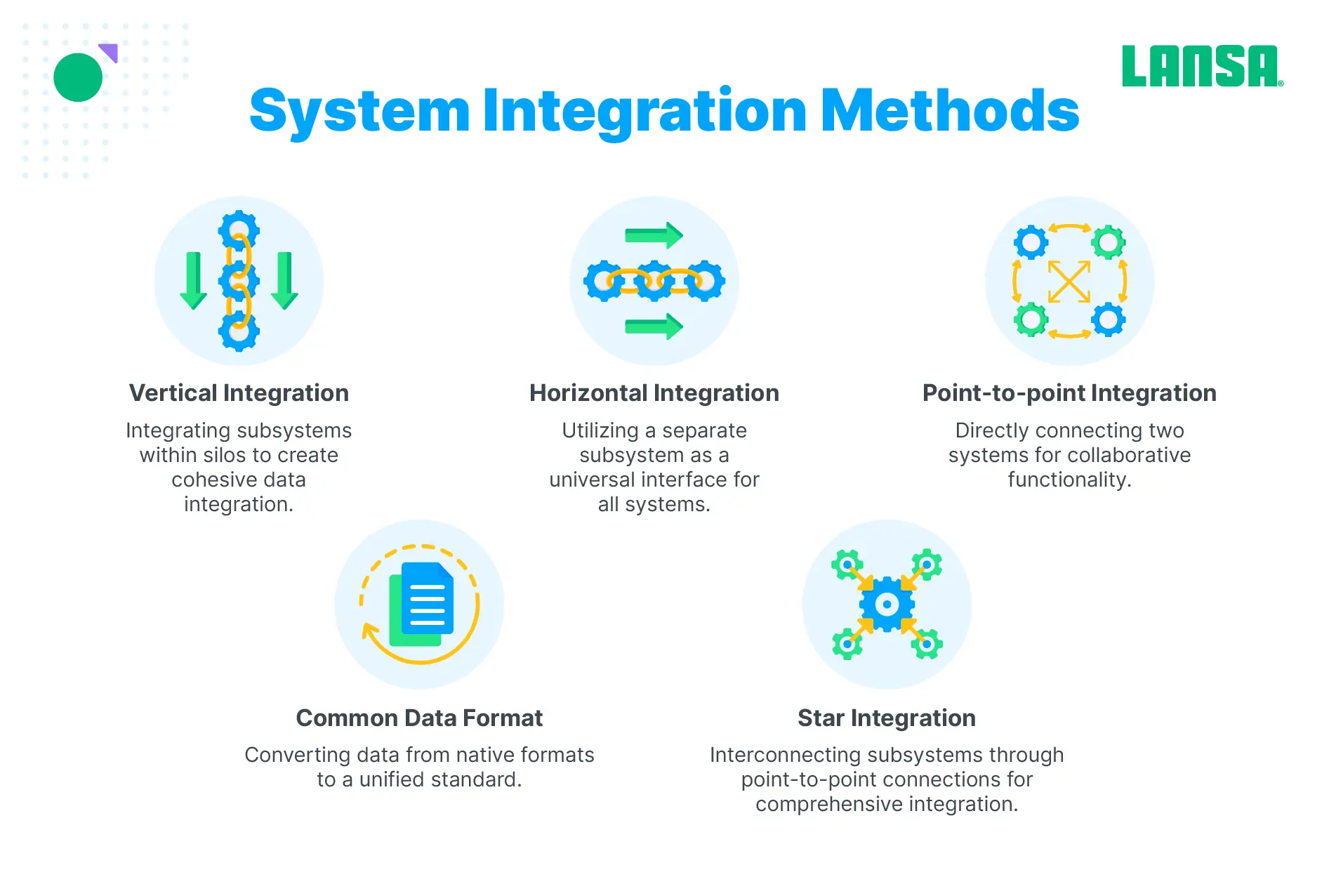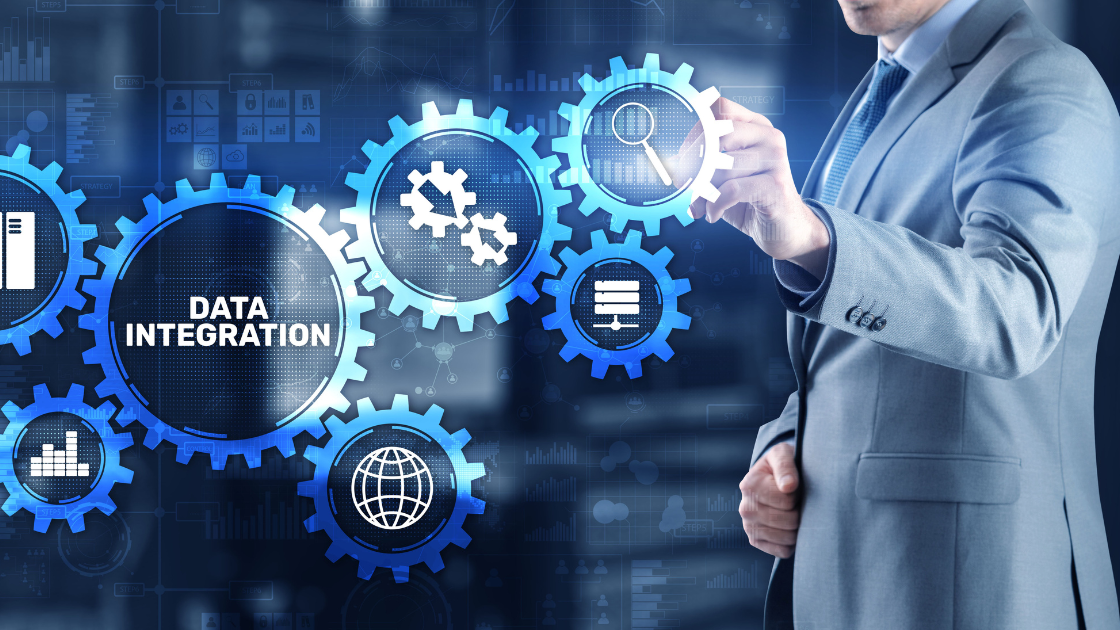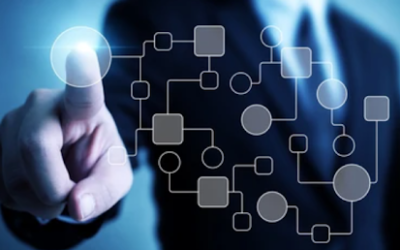System integration is crucial for businesses. Here are some key insights on integrations and how they can benefit your organization:
- System integration enables you to connect multiple systems across your business ecosystem to share data automatically between multiple platforms and applications.
- There are several types of system integrations, including data, legacy systems, enterprise applications, business-to-business, and electronic data interchange (EDI), all of which unify data from multiple sources.
- Some of the primary challenges encountered during system integrations include dealing with legacy systems, changes in your integration environment, a lack of skilled resources, a lack of accountability, and choosing the right integration tool.
Continue reading to learn more.
What is System Integration?
Data integration refers to connecting different systems and unifying their data so they can all function as one. This enables businesses to exchange information between subsystems automatically as they translate data from multiple sources in their technology stacks.
From the perspective of this systems integration definition, the purpose is to eliminate communication barriers between different systems by making sure that data flows freely between them. This enables businesses to identify, collect, analyze, and use data more effectively. As a result, they can make more effective decisions and data-based strategic plans. What are integrated systems in the context of customer-facing elements of your business? Companies often use system integration to boost customer satisfaction and improve their product development processes, producing data-driven solutions for customers.
Types of System Integration
The kind of system integration you choose will depend on your current technology stack and your organization’s goals.

Data Integration
Data integration is the process of collecting data from different sources. These may include platforms, services, and databases. By pulling data from disparate sources, businesses game essential points of access and enhanced visibility into multiple systems. An effective integration makes it easier to process and consume the data produced by users and their systems.
Legacy System Integration
Legacy system integration refers to establishing connectivity between legacy systems and modern, updated IT infrastructure. In this way, you establish seamless communication, linking the data from legacy systems with newer, more agile IT components. With an effective legacy system integration, employees can enjoy uninterrupted workflows as data gets pulled from older applications they still need to do their jobs.
Enterprise Application Integration (EAI)
Enterprise application integration brings together separate subsystems in your business’s environment. The goal is to combine multiple functions from separate applications into a central environment. For instance, you could use enterprise application integration to unify your inventory management and fulfillment data. This would enable you to make better strategic decisions regarding what to order and how to ensure it arrives on time.
Business-to-Business Integration
Business-to-business integration involves multiple companies’ automated document exchanges and transactions between them. The goal is to enhance cooperation between customers, partners, and vendors. Here’s a straightforward system integration example: You could use a business-to-business integration to connect a retailer’s e-commerce solution and a supplier’s warehouse software. This would make it possible for the supplier to use customer order data to understand when the retailer needs to order more inventory.
Electronic Data Interchange (EDI) Exchange
Electronic data interchange (EDI) exchange provides companies with electronic communication methods used for exchanging business documents. With EDI, you also establish a structured format that makes the data flowing back and forth understandable and actionable. With an effective EDI system, you get more streamlined business processes thanks to seamless data flows between applications.
System Integration Methods
System integration methods differ according to the layout of the resources you want to integrate and how you’ll use the data you’re sharing.

Vertical Integration
Vertical integration involves intentionally creating silos through which you integrate data. You integrate the subsystems within the silo, positioning the most basic functions at the bottom. This is a fairly straightforward approach to system integration.
At the same time, it can be rigid because each time you add additional functionality, it has to get its own silo. But the vertical integration method can be effective when you’re creating simple integration only needed to support one function.
For instance, a home improvement store can vertically integrate data from a lumber yard to know how much stock the lumber yard can provide.
Horizontal Integration
In a horizontal integration, you establish a separate subsystem that works as an interface layer between all of your subsystems. This is often called an Enterprise Service Bus (ESB). Using the horizontal approach, you provide a single point of connection between multiple subsystems. This makes it possible to change or replace a subsystem without having to alter the interfaces of the other integrated systems.
Point-to-Point Integration
With a point-to-point integration, you directly connect two systems to each other, enabling them to work together. In most cases, point-to-point integration only enables a single function, and it doesn’t incorporate complicated business logic.
For example, it’s common for cloud-based applications to provide point-to-point integrations for common IT systems.
Even though the point-to-point method is less complex than a typical system integration, it still enables useful connectivity between assets.
Common Data Format
With the common data format approach, each system performs one data conversion as it shares information with the other subsystems. This involves transforming data from the subsystem’s native format to the one used in the integration. Similarly, when data flows back into the subsystem, it gets transformed back into the system’s native language.
By using the common data format, you reduce the number of data transformations you have to perform. This makes it easier to maintain the communications that power your integration.
Star Integration
In a star integration, every subsystem is linked with the others via point-to-point connections. In this way, you can enhance functionality because you have many different ways of sharing data.
At the same time, however, each time you add a subsystem, you drastically increase the number of integrations you have to implement. This is because each subsystem needs to connect to every other one in your network. As a result, it can be hard to establish and maintain new connections.
Benefits of System Integration
System integration enables a range of benefits that can improve data sharing and decision-making across your organization:
- Because you can consolidate and optimize all of your interconnected data, it’s easier to retrieve and process information coming from different subsystems.
- You get improved accessibility to data, so you don’t have to manually locate and retrieve business-critical information.
- You don’t have to manually enter the same data again and again across multiple systems.
- You get an automated, centralized data storage system, so you don’t have to use multiple storage resources for the same data.
What Role Do System Integrators Play?
A systems integrator (SI) is a company that plans, implements, coordinates, schedules, tests, and improves IT systems. In the context of systems integrations, an SI enables the data integrations between the systems you need to connect.
To fulfill their responsibilities, an SI designs, implements, and tests the integration. In addition, your SI may also maintain and manage your solution over time. This could include connecting with third parties to establish connections with their systems, too.
System Integration Challenges
Even fairly straightforward system integrations can hit roadblocks. Often, the most significant challenges stem from issues with the project scope or execution rather than the technology used to implement the integration.
Legacy Systems
Legacy systems often play a central role in an organization’s operations, and they can be difficult to integrate. One of the more common issues is identifying a data structure that works with the data format of legacy systems.
It can also be difficult to transfer data from legacy systems because they may use outdated interface technology. For example, some may lack wireless connectivity, making it difficult to get their information to a 5G network.
Changes in the Integration Environment
It’s common for your integration environment to change over time. The longer your integration takes, the more likely it becomes for changes to present challenges. To avoid changes interrupting your progress, it’s best to keep your integration projects short.
Lack of Skilled Resources
Even if you have advanced, full-featured integration technology, it can be difficult to find the expertise needed to use it. Many companies have a hard time finding and retaining employees that have system integration skills.
One of the most effective ways to overcome this challenge is to hire a third party to design and implement your integration. They already have the necessary skills and can also recommend the most effective technology for meeting your goals.
Lack of Accountability
As you integrate a variety of subsystems, you may have several stakeholders involved, making it difficult to map out who’s accountable for what. Some may be more concerned about the element of the integration that directly impacts their workflows. These people may hesitate to assume responsibility for errors or failures that involve other parties.
To avoid delays and conflict, you should establish a framework of shared accountability at the outset of the project.
The Right Integration Tool
Choosing the best tool for your integration can be a challenge because there’s no shortage of options. Each solution has its strengths and drawbacks, so identifying the most effective choice can be time-consuming.
For many organizations, it makes more sense to custom-design their solution according to their specific goals. Using a solution like LANSA Integrator can make the customization and design process easier and faster. LANSA Integrator comes with tools that facilitate data exchanges between many different subsystems and in a wide range of formats. By incorporating LANSA Integrator’s services in your integration application, you can enable easier data transformations and transport.
Issues with Legacy System Integration
Legacy system integrations can be especially challenging due to the lack of compatibility and where a legacy solution stores its data. However, because legacy systems often become essential to operations, it may be necessary to integrate them with your newer infrastructure.
This can be particularly challenging when you have to integrate legacy components with web- or cloud-based systems. LANSA Open for .NET can make many legacy integrations easier. You can access IBM I (AS/400, iSeries) resources with .NET applications. This makes it easier to integrate IBM I data with web applications your team creates — either as standalone solutions or as part of your integration initiative. You can also access LANSA’s Business Rules Engine from your .NET applications without having to write your own code, which saves valuable time.
Issues with EDI Exchange
EDI exchange can be difficult, especially when you have to adjust your standards to accommodate different integrations with other parties or systems. Compatibility can be an issue, as can processing issues as you figure out how to get data from one subsystem to another.
To meet these challenges, teams often turn to LANSA Composer because it gives you visual mapping you can use to map data from EDI documents. If you have an EDI source component, for example, you can simply select “EDI” from Composer’s Insert menu and then add the components to the map.








